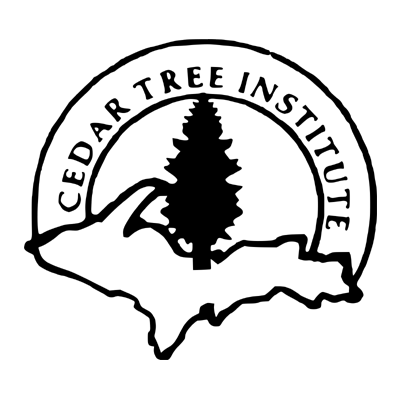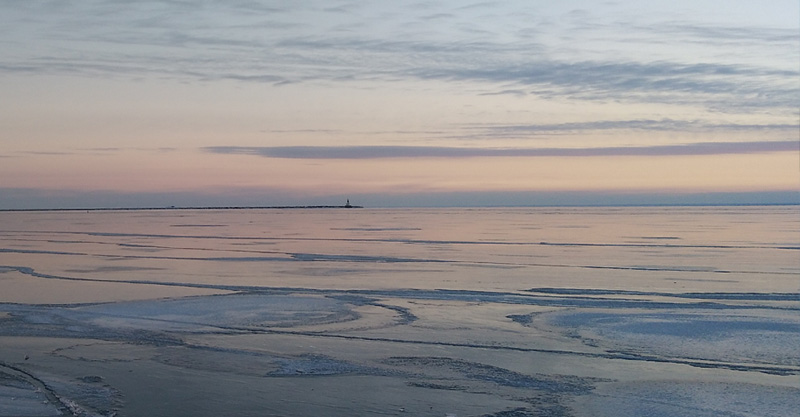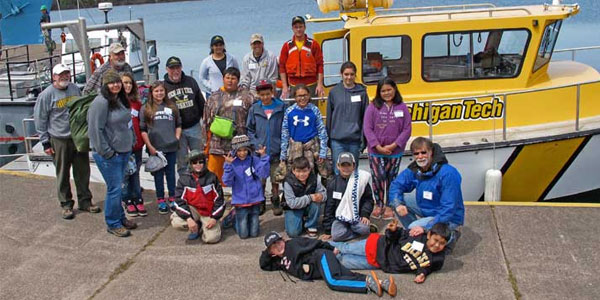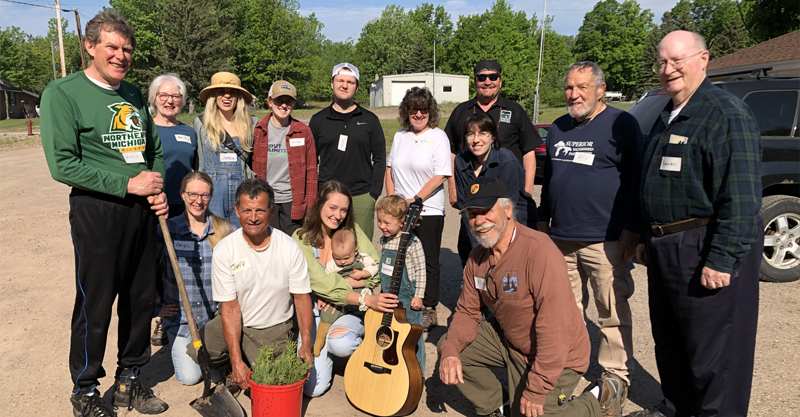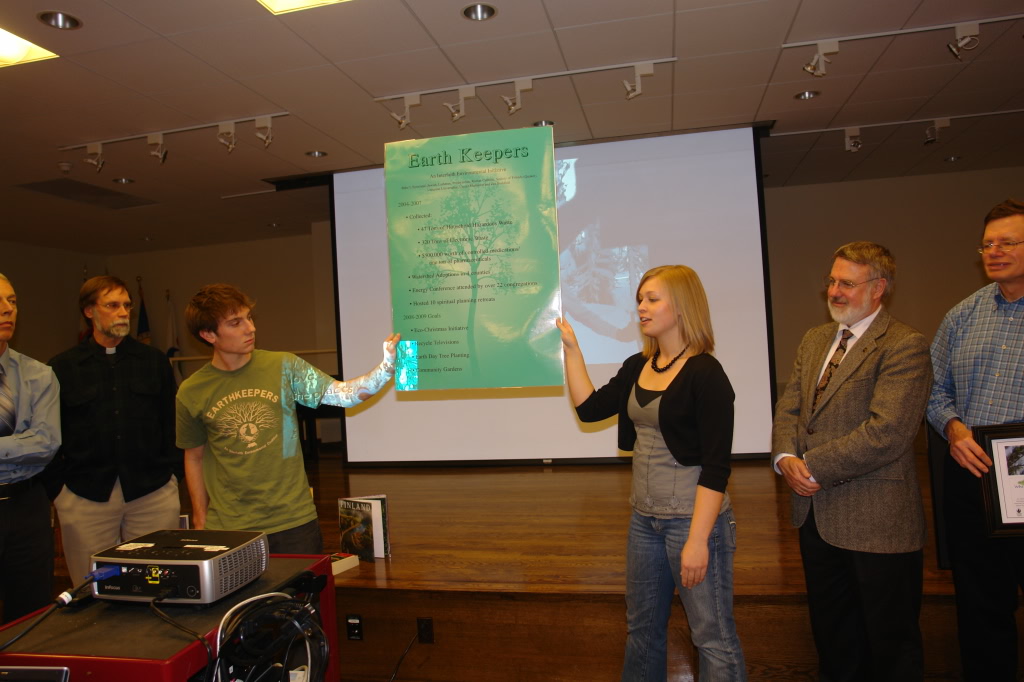The Gift of Water
as seen in the Marquette Monthly February, 2019
By Martin Achatz
. . . is it for these reasons that there is such a dumb blankness, full of meaning, in a wide landscape of snows—a colorless all-color of atheism from which we shrink?
–Herman Melville
I sit down to write these lines the morning following the first major snowstorm of winter. One week after All Souls Day, a comma of arctic air swooped across Lake Superior, gathered the wet shrapnel of wave crash and foam, and baptized my little portion of the Upper Peninsula with dunes of white. It happens every year, and yet I still stand on my front porch, stunned by those first blind crests and tidals, a Winslow Homer seascape of ice and snow.
In the 1880s, anthropologist Franz Boas, traveling through the tundra of northern Canada, noted an ocean of terms used by the indigenous people to describe the whiteness. Scientists and researchers have debated his claim ever since, but recent studies of Inuit, Yupik, and Icelandic dialects have identified some 163 terms for snow and ice, made up of root words and suffixes. Linguist Willem LeReuse says, “These people need to know whether ice is fit to walk on or whether you will sink through.” This language is “a matter of life and death.”
A frozen lake is not frozen. Beneath the white lid of winter, it continues to breathe and groan, strain and stretch. I sat in a friend’s shanty on Lake Independence one January night. Cold stars Swiss-cheesed the heavens, and a fuse of wind sizzled across the whiteness, driving pellets of snow against the shanty walls. Slush skimmed the fishing hole, coughed and shrugged over the lip of ice. Below me, my hook dangled in the black Jell-O of the lake as I listened. The snow and ice and water were singing. Otherworldly music—blue whales dueting in the Atlantic, meteors whistling through atmospheres, penguins or aliens or angels giving thanks under green fingers of aurora. It was a conversation of states, solid talking to liquid talking to solid, in a language older than Inuit or Yupik. A glacial language of endings and beginnings.
Abridged list of English snow terms from the Farmer’s Almanac: barchan, corn snow, cornice, dendrite, finger drift, firn, graupel, ground blizzard, hominy snow, lake-effect snow, needle, penitents, pillow drift, powder, rimed snow, snirt, snowburst, sun cups, whiteout.
Drive to the shores of Lake Superior just before sunrise in February. Make sure the sky is empty of everything but stars and moon. Park near Little Presque, just as a rib of light crowns the horizon. Get out of your car. Stand and listen. You will hear a rushing sound in the distance, like a herd of sleeping mammoths, breathing thunder in unison. In. Out. In. Out. Follow that sound. It will not be easy going. You’ll encounter boulders of ice, four- and five-foot drifts of snow sheathed in thick rime, polar faults that trap feet and legs. If you aren’t careful, you may end up slogging through thigh-deep planes of not-quite-snow and not-quite-ice. Keep moving toward the sound.
Light will crawl into the heavens as you walk, and you’ll be tempted to pause and watch. Don’t. You’ll miss the main attraction because of the opening act. Forward. Go forward. Judge for yourself when you are close enough to the Big Waters. You should be able to see the lake fully, without distraction of trees or piled snows. Be careful not to go too far out. Waves and currents are still moving beneath the ice, and you may sink through. This is life and death. Once you have found this spot, stand there. Breathe with the water. In. Out. In. Out. Don’t take out your phone to mediate the moment. No video. No pictures. Just watch.
Mix light with water, and the result is Monet—purples, greens, pinks smeared together like sidewalk chalk after a rain. Mix light with water and snow and ice, and the result is clearer, harder. A Byzantine landscape of colored glass shards. Whites, greens, blues, reds pieced together into the geometric face of something divine. Jonah swallowed by the Leviathan. Christ strolling across the Sea of Galilee. Thoreau chopping wood by Walden Pond. Whiteness gives way to meaning.
In March or April, I stand by my kitchen window and watch the world melt. A fang of ice hangs from the eave of the roof. As the sun strikes it, it begins to sweat, drops steady as the second hand of a clock. Soon there will be slush, then mud, then green. The dumb blankness of December and January flows with this promise of becoming. It is the language of water.
WATER STEWARDSHIP TIPS
Snow is a gift, full of watery beauty, life. Open your mouth, stick out your tongue, taste winter.
Avoid using salt in winter. It eats away cement, kills sleeping grass, and seeps into groundwater.
Contributor’s note: Martin Achatz is a poet, teacher, musician, and Lake Superior sunrise enthusiast.
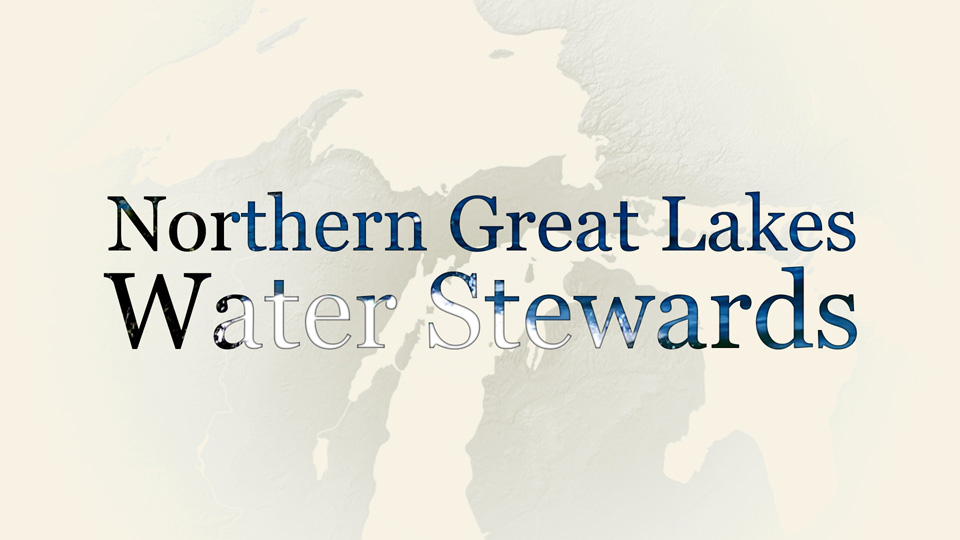
“The Gift of Water” columns are offered by the Northern Great Lakes Water Stewards and the Cedar Tree Institute, joined in an interfaith effort to help preserve, protect, and sanctify the waters of the Upper Peninsula.
